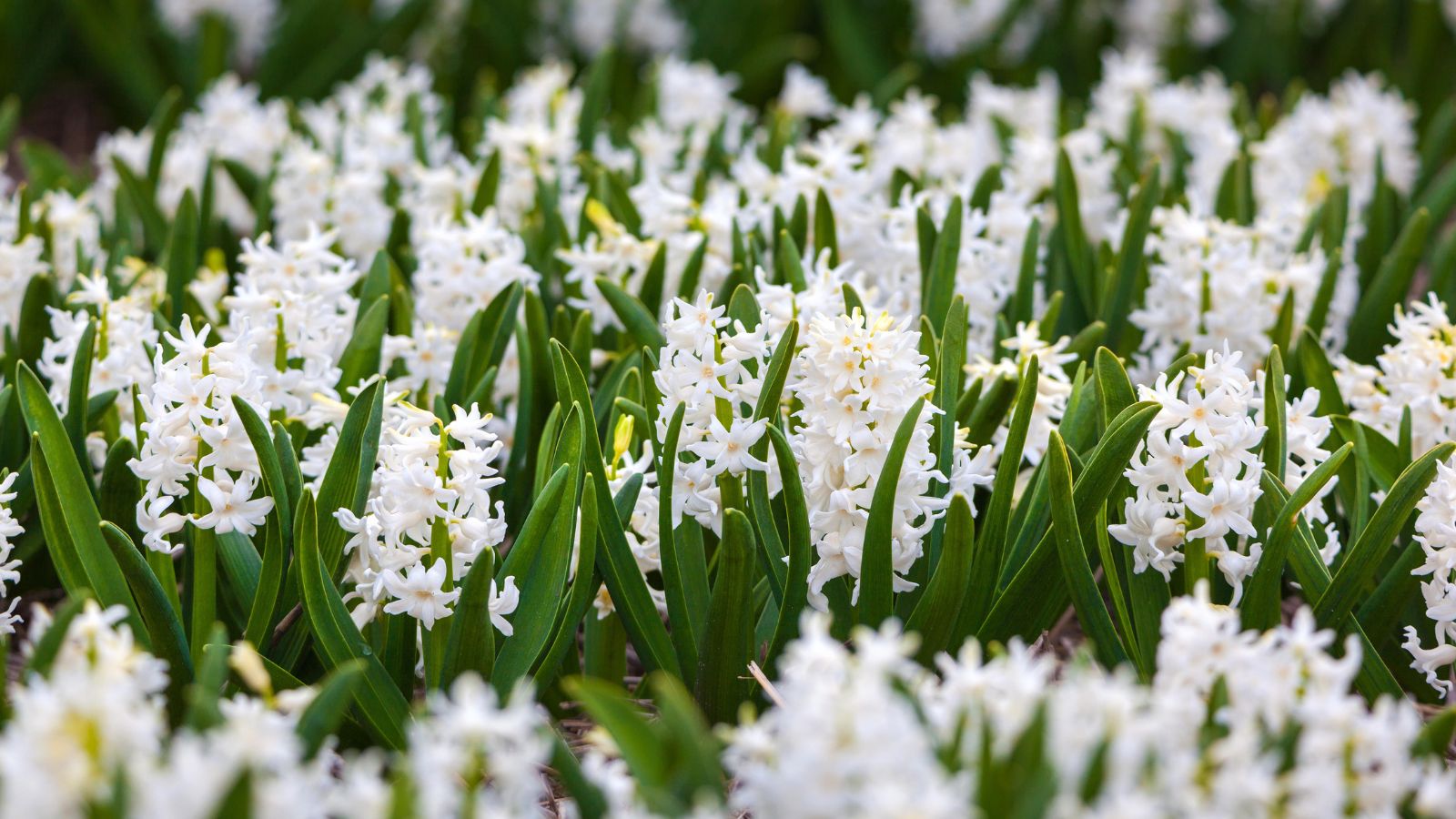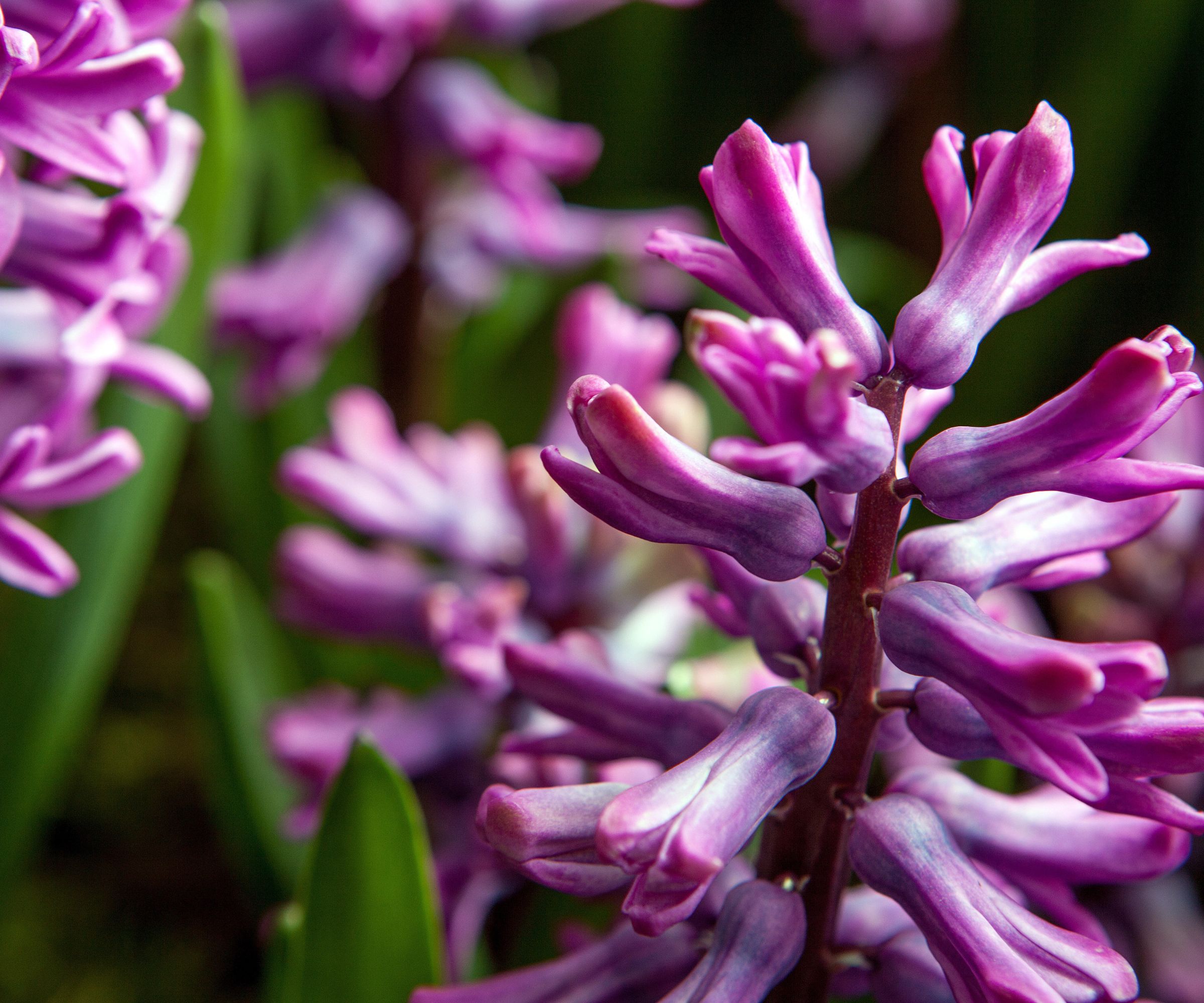How to plant hyacinth bulbs – expert tips for breath-taking results
Find out how to plant hyacinth bulbs and fill your yard with spring color and fragrance


Discover how to plant hyacinth bulbs like an expert and look forward to a spring garden that’s filled with color, perfume and beauty.
One of the most popular flowering spring bulbs, hyacinths are unrivalled when it comes to planting up beds, borders and containers. With their mass of tiny star-shaped florets that steadily emerge out of a single stout bulb, these spring beauties and their deliciously sweet scent never fail to impress. They are also an excellent early source of nectar for bees just emerging from hibernation, making them great for pollinators and wildlife in general.
Over the years, commercial breeders have refined their offering to around 50 named cultivars and these include some stunning blooms. Ranging from deepest blue-black, through unusual blush and coral tones to more traditional bright blue, pink and white there are plenty of color options and possible combinations to explore. Each color is also said to have its own fragrance, with Delft Blue having the strongest of them all.
Want to know more about how to plant bulbs to bring beauty to your backyard and the inside of your home? Then we’ve got the lowdown on what to look for and how to get started.
How to plant hyacinth bulbs

‘Like tulips, hyacinths always look their best the first spring after planting,’ says Diane Blazek of the National Garden Bureau. ‘For this reason, most gardeners plant fresh bulbs every year or two. While the bulbs with usually rebloom for several years, they will gradually revert to the original species, with single florets that are widely spaced along the stem.’
How to plant hyacinths in beds and borders
Buy the right bulbs: When to plant hyacinth bulbs? If you are used to planting bulbs in fall, you will know that hyacinth bulbs are readily available online and in retailers for planting during early fall. Sold loose or pre-packaged – occasionally in specially curated bulb mixes – there are numerous varieties – old and new to choose from.
As with most spring and summer flowering bulbs the general rule is the plumper the bulb the larger the bloom, so always buy from a reputable source – or consider Amazon's vast range of hyacinth bulbs, which you can also buy by USDA hardiness zone.
Design expertise in your inbox – from inspiring decorating ideas and beautiful celebrity homes to practical gardening advice and shopping round-ups.
Find the right spot: hyacinths like a good four hours of sun a day and soil that is loamy and loose.
Dig out hole for planting: ‘For planting clumps of hyacinth bulbs in beds and borders, dig a hole large enough to hold all the bulbs in one group or drift. Set them upright at the bottom of the hole, tops up (pointed side up), and space properly,’ advises Venelin Dimitrov, Product Manager at Burpee, ensuring they are at least 3in apart and 4in below the soil's surface.
‘Press the bulbs into the soil and cover with the prepared soil to the recommended depth. You can also use a trowel to dig individual holes.’
‘Besides being fragrant and easy to grow indoors, Hyacinths are a perennial spring-bloomer, meaning they illuminate the garden year after year,’ says Amanda Shephard of American Meadows. ‘They are also unappealing to pesky critters such as deer and rabbits, staying safe in the ground and not likely to be dug up.’
How to plant hyacinths in pot and planters
Good drainage and regular watering are key for healthy pot grown hyacinths. Like most flower bulbs they hate being waterlogged and will quickly rot if left sitting in wet soil. Make sure any container has plenty of drainage holes, line the base with crocks and add a handful of grit to the compost too.
Plant these chunky bulbs at 4-5inches (10-13cm) deep, close but not touching and ideally in odd numbers for a spectacular display.
How to grow hyacinths in glass vases
Easy to grow and beautifully fragrant, hyacinths were championed by Madame de Pompadour, mistress of King Louis XV of France and quickly became hugely fashionable.
‘For flowers, she favored the Dutch Hyacinth over all others and loved its intoxicating perfume,’ says Amanda Shepherd. ‘She filled the vast Versailles gardens with them in spring, and for the rest of the year, they bloomed in every room in the palace in glass hyacinth vases.’
These glass vases with a pinched waist are still very popular today and are great way to marvel at these as they put out roots and begin to shoot. Fill the lower part of the glass with water and then place the bulb in the top section, making sure the base doesn’t get wet.
Keep the water topped up and the bulb in a dark place until the shoot is about 4-5cm tall, before moving it to a sunny indoor spot to bloom.
What do you do with hyacinth bulbs after they bloom?
Once hyacinths have finished blooming, cut off the dead flowers and let the leaves wilt and die, keeping the soil unwatered. Dig out the bulbs and dry any healthy-looking ones (damaged or diseased ones can go on the compost heap). Store dried bulbs in paper bags in a dry, dark place, then replant next fall.

Journalist Jill Morgan has spent over 20 years writing and editing gardening, interior and property features. Titles she has worked on include The English Home, House Beautiful, Ideal Home, Houzz and Modern Gardens and she writes regularly for H&G as a Contributing Editor. Whilst she is a dab hand at renovation projects and DIY, she is happiest when out digging in the garden or planning a new border.